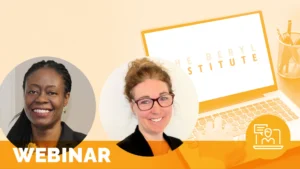Issues Awareness Improves Quality and Reimbursement In Home Health Patients

Six hundred million home health visits occur in the US each year to facilitate short-term recovery and manage long-term diseases, and over 35,000 agencies deliver this care.
Value-based purchasing (VBP) is the term explaining how reimbursement is linked to performance. This payment structure holds healthcare entities accountable for the cost and quality of care they deliver. The intention is to drive improvement by rewarding the best performers. The criteria consist of clinical effectiveness, cost, and patient experience – with payments varying by 10%. The Medicare VBP model for home health begins on January 1, 2023.
-
Clinical Effectiveness is based on the Outcome and Assessment Information Set (OASIS) that quantifies patient improvement in symptoms, mobility, self-care, and medication management.
-
Patient Experience is based on the Home Health Care Consumer Assessment of Healthcare Providers and Systems (HHCAHPS) responses.
-
Cost is based on emergency department visits and hospital readmission within 60 days of home health initiation.
HHCAHPS entails a questionnaire mailed to patients (or their proxies) by a vendor like Press Ganey. Results are publicly reported on the Care Compare website and help patients and families to make informed decisions when selecting their home health provider.
Responses to the HHCAHPS survey are the basis for three composites and two global measures. The composites are Care of Patients, Communications Between Providers and Patients, and Specific Care Issues. The global measures are comprised of Overall Rating and the Likeliness to Refer.
Jason Wolf, the President of The Beryl Institute, emphasizes that organizations can better serve their patients by reaching out for feedback by asking How are you doing? Checking on someone’s well-being is a kind gesture, and, more importantly, the response sometimes allows us to improve outcomes directly. When an issue is promptly uncovered and resolved, nearly every VBP component is likely to improve.
The average home health visit lasts an hour or less, often occurring twice a week. Upon hospital discharge, as patients begin adjusting to their new normal, questions about pain control, mobility, self-care, and medication management arise each day.
It was common practice to admit patients so home health placement could be arranged the following day. With the advent of emergency department (ED) case management, this practice is discouraged since it unnecessarily consumes resources and results in an observation admission. CMS created negative financial incentives for hospitals (lower reimbursement) and patients (higher co-payment) when a patient stays overnight and regular hospital admission is unwarranted. As a result, ED case managers strive to initiate home health services directly from the ED.
With a patient surveillance system in place, unnecessary ED returns are reduced. Emergency physicians become more comfortable discharging patients home when there is peace of mind that they will be adequately monitored for interval worsening. Of course, readmission is a non-issue when an initial admission is avoided.
Another critical reason to avoid admission is that geriatric patients become anxious and sometimes very agitated and confused (known as “sundowning”) when thrust into unfamiliar surroundings. Additionally, they are at risk from hospital-acquired infections.
The bottom line is that “issues awareness” enhances patient outcomes, reduces readmission, and improves the overall patient experience. This practice is essential to optimizing VBP reimbursement.
Related content
-
 Culture & Leadership
Culture & LeadershipLeading through Listening: A Conversation with Garrett South
Join us as Garrett South, Director of Patient Experience at California Hospital Medical Center, shares his inspiring journey from fifth-grade class representative to healthcare executive. In this episode, Garrett discusses the power of connection and belonging in a world reshaped by post-pandemic social isolation.
Learn more -
 Culture & Leadership
Culture & LeadershipLeading in Turbulent Times: Why Experience is Essential to Healthcare’s Future
Healthcare systems around the world and throughout our community are being buffeted from all sides, with higher acuity patients, a vulnerable and stressed workforce, unsure finances and support structures, and even challenges to long-held medical truths. For as much as we traversed a once in a lifetime moment through the pandemic years, the residual effects
Learn more -
 Culture & Leadership | Staff & Provider Engagement
Culture & Leadership | Staff & Provider EngagementUsing Gratitude to Elevate the Human Experience
In this webinar, the presenters will share how they developed a Gratitude Report as a part of Southcoast Health’s grateful patient program using positive patient feedback, comments, and stories to recognize caregivers that embody the values and service behaviors. The Gratitude Report is a list of employees’ names that have been mentioned by patients and
Learn more
